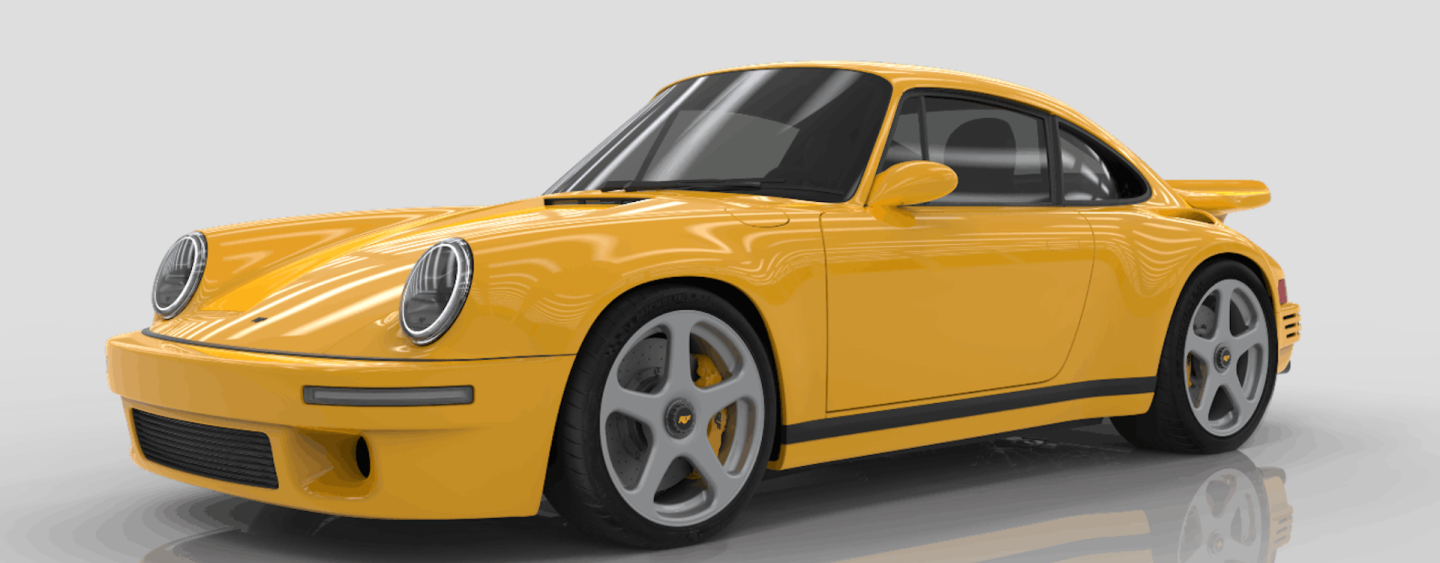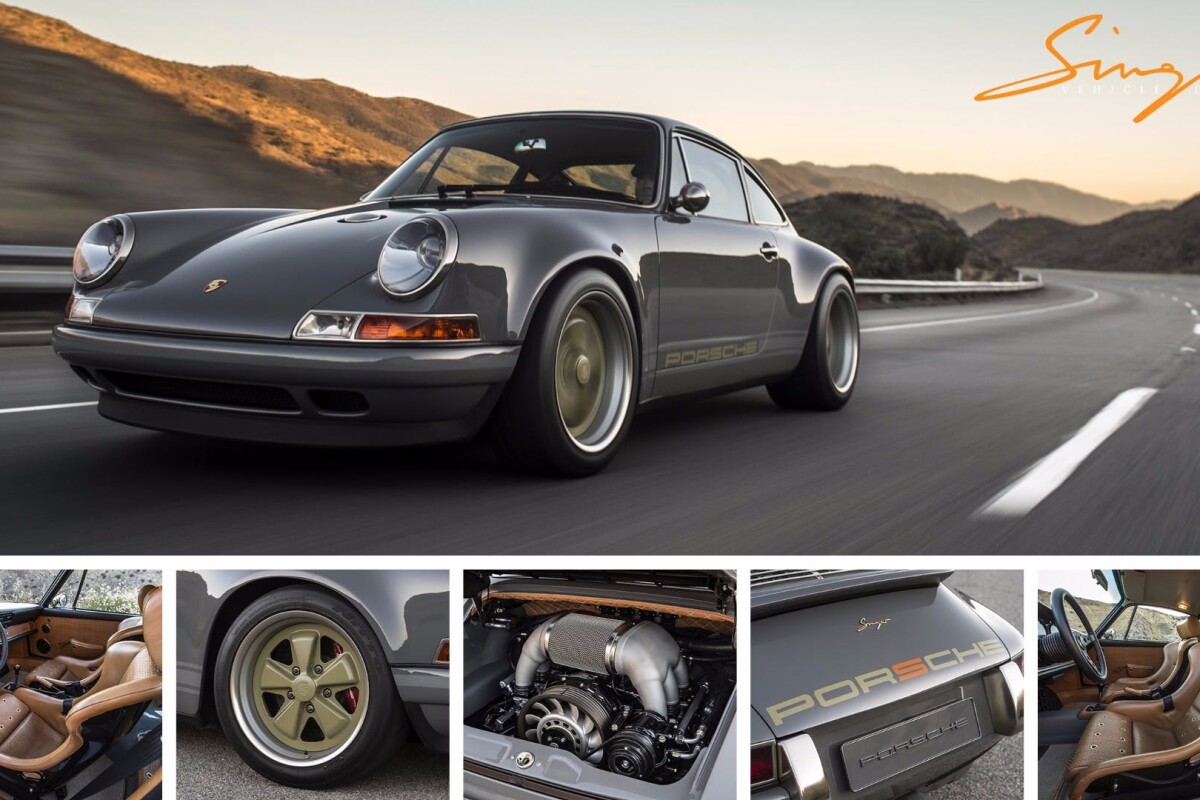The engine is still in the same place, but the current Porsche 911 is a long way removed from its predecessors. For most owners, that is a very good thing: the current Carrera is cleaner, faster and safer than those before it. But some people don't want cleaner, they want a properly old-fashioned driving experience. That's where restorers come in. Here's a look at some of the prettiest, most powerful restorations of the classic Porsche coupe.
Porsche 911 reimagined by Singer

The highest-profile 911 restorations have, lately, come from the Singer Vehicle Design team in California. Chris Harris set the internet alight with his deep-dive into the design process behind creating a Singer, before James May paid tribute to the company during a review on Top Gear.
Since then, the small team of enthusiasts has been featured in most of the world's biggest car magazines. Perhaps unsurprisingly, all the reviews have been overwhelmingly positive.
Having started with an old 964-generation (1989–1994) car, Singer sets about turning it into a stunning greatest hits album. The regular body panels are reconditioned or, in some cases, replaced with carbon fiber units, while the wheel arches are lovingly flared for a punchier stance. We don't need to tell you the cars look fantastic but, well, they look fantastic.
Power comes from a choice of three air-cooled flat-six engines, ranging in output from 270 to 390 hp (201 to 291 kW). A four-liter flat-six is currently being developed with Williams Advanced Engineering and Hans Mezger, and is expected to produced upwards of 500 hp (373 kW).
All this bespoke goodness doesn't come cheap. Along with the cost of a base car, restoring a 911 to Singer Vehicle Design standards costs at least US$390,000.
Gunther Werks 400R

Gunther Werks takes a slightly different approach to 911 resto-modding, but the results are no less dramatic. Based on a 993-generation (1993–1998) car, each 400R gets some wider wheel arches and tougher bodywork, including a massive rear wing. The carbon fiber panels are vacuum bagged and baked in a pressurised autoclave for extra rigidity, too.
The body hides a new set of adjustable coilovers, along with a hydraulic lifter for the nose. No, that wasn't a factory option at launch, but sometimes modernity is preferable to period accuracy. The original suspension bushings are carried over into the 400R, but all the other hardware: bushings, links and sway-bars have been completely refreshed.
Customization is the name of the game inside, where the basic architecture of the 993 cabin has been dressed up in a fancy new carbon and Alcantara suit. Touches like the tastefully-finished five-dial dashboard and carbon parcel shelf serve to elevate the feel beyond other basic 911s.
Along with the beautiful interior, owners get their keys and a bespoke fountain pen with the car. Delivery takes place at a luxury resort in California, where owners are pampered for a day before getting to drive off in their new pride-and-joy. All told, you'll pay upwards of $525,000 for the privilege.
RUF CTR Yellow Bird

RUF has an unmatched pedigree when it comes to high-flying Porsche makeovers. The original Yellow Bird was a regular 911 Carrera with two gigantic turbochargers turned into a twin-turbo rocket. Hardly any were built, cementing as something of a prized unicorn in the already Porsche-friendly world of motoring enthusiasts.
For those who haven't heard of the original CTR, it's worth donning a pair of rose (or should that be yellow) tinted glasses and taking a quick wander down memory lane. It hit 60 mph (97 km/h) in 3.65 seconds on the way to a top speed of 340 km/h (210 mph). That's right, this low-volume special was faster than the legendary Ferrari F40.
That car was based on a period-correct 911, whereas the modern car is a totally bespoke design. Built around a carbon fiber chassis, the car has a steel crash structure and roll cage. The body panels are all made of carbon fiber, and the components are all wrought to be strong and light, keeping kerb weight down to 1,200 kg (2,640 lb).
With so little weight to shift, RUF could have fitted a lightly-fettled Porsche flat-six, and the CTR would still be lightning quick. But that isn't how things work at RUF. Power comes from a twin-turbo flat six making 522 kW (700 hp) and 880 Nm (649 lb-ft). The 100 km/h (62 mph) sprint takes just 3.5 seconds, and the car tops out at 360 km/h (225 mph).
Both inside and out, the CTR Yellow Bird has been designed to mimic to narrow, simple shape of the original. It isn't as swollen or pumped-up as some of the other cars here, but that seems in keeping with the RUF way of doing things. Just 30 examples will be built.
Porsche 911 R

Alright, so it isn't technically a restoration, but all the core concepts underpinning the cars you see above – a focus on purity, plenty of power and beautiful design. Launched in 2016, the R was designed as a love letter to classic Porsches.
It was based on the GT3 RS, but rather than keeping the big wings and dual-clutch gearbox, it swapped the for a smooth silhouette and manual. Suffice to say, the purists were pleased. Power comes from a naturally aspirated flat-six making 373 kW (500 hp) and 458 Nm (338 lb-ft) of torque, for a 3.7 second sprint to 100 km/h (62 mph). Top speed is 322 km/h (200 mph), not that buyers are likely to care.
The interior is suitably stripped out, with houndstooth-trimmed bucket seats and a button-free steering wheel. A radio is optional, but the sound of the four-liter engine should be enough to keep you entertained on long journeys, especially when you consider the lack of sound deadening.
While we're talking long-drive entertainment, the 911 R should be great fun on a nice piece of road. You get a mechanical locking differential and rear-axle steering as standard, along with carbon ceramic brakes at all four corners. Coupled with center-locking wheels wrapped in sticky Michelin rubber.
All this modern-meets-retro goodness isn't cheap. The car was built in limited numbers – just 991 were made, and all were sold incredibly fast. Although they cost $184,900 new, prices on the R have climbed at a rapid rate, to the point where they're now worth more than $1 million.
















































